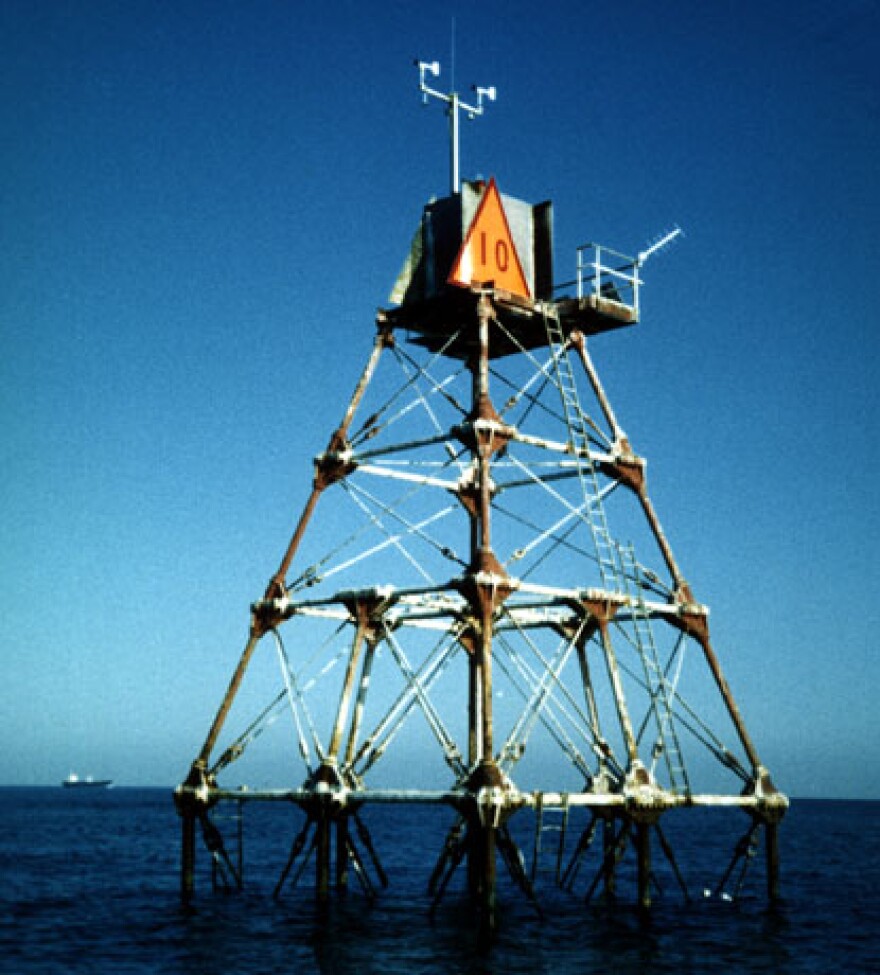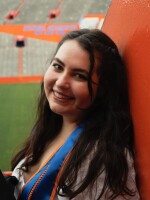Recreational boaters, charter fishermen, divers, environmental researchers, and federal meteorologists rely on on-the-ground weather observation data to understand the rhythm of the sea.
The timely data, however, comes from stations, including some in the Florida Keys, that were constructed on top of wooden structures first built to support 19th-century-era lighthouses. Some of those stations are now being shut down, leaving those who rely on them in the dark.
About 40 Coastal Marine Automated Network stations, or C-MAN stations, can be found at several points along the U.S. coast. These stations house weather instrumentation that captures real-time information about wind direction and speed, air temperature, barometric pressure, air temperature and sometimes seawater temperature, water level, wave height, and relative humidity.
READ MORE: “A 'catastrophe' in the Lower Keys: Summer heatwave wipes out iconic elkhorn coral”
It’s a critical tool for boaters, divers, ocean researchers, and fishermen to ensure that the ocean conditions they’re headed to are safe.
“The observations that we collect with our instrumentation are important for mariners as they are out in the water,” said William Burnett, the director of the National Data Buoy Center.
“(The data) gives them situational awareness of what the seas and winds and conditions are like.”
The program that oversees and maintains C-MAN stations dates back to the 1980s.

Many stations, like some in the Florida Keys, were constructed on top of wooden structures that were first built to support 19th-century-era lighthouses. Others were built near shore islands, capes, beaches, or solitary offshore platforms.
As the wood pilings that hold C-MAN stations age and become dilapidated, it becomes unsafe for the crews that maintain them to reach them, according to William Burnett, the director of the National Data Buoy Center. The NDBC is tasked with overseeing each station. But, they don’t control the platforms they’re fixed to.
“We don’t maintain facilities, we maintain weather instrumentation,” Burnett said.
When these often wooden platforms become derelict and unsafe to reach, the NDBC chooses to decommission them, meaning that they stop collecting and publishing information to the public about sea surface conditions in those areas.
So far, in the last 10 years, seven C-MAN stations across the country have been decommissioned. They were along coastal states including Alabama, Alaska, California, Virginia, and Washington. Five of those stations, including two in Florida, were decommissioned in just the last two years.
Stations located at Pulaski Shoal in the Dry Tortugas off of Key West and Molasses Reef Light in the Upper Keys.
“We don't have money to maintain the infrastructure that's there that holds the equipment, so we had to disestablish those two stations,” Burnett said.
How C-MAN stations are used
The stations that were shut down have created gaps in knowledge about weather conditions in those areas, which means that local meteorologists, like the staff at the National Weather Service (NWS) in Key West, lose out on real-time information about critical weather events.
“For example….Hurricane Ian pretty much passed directly over the Dry Tortugas and (Pulaski Shoal Station) or at least what would have been that station,” said Chip Kasper, the Meteorologist in Charge at the NWS Key West office. “So we really had no data from the surface during Hurricane Ian.”
The data is also lost to staffers at the National Environmental Modeling Center (EMC).
They use information collected from C-MAN stations in a small but important way. The mathematical computer models created at the EMC form the basis of all weather forecasts and warnings that meteorologists use to predict weather patterns, including severe storms.
C-MAN station data is used to verify the accuracy of certain forecasts that their models produce.
“(The NDBC) collects observations from the C-MAN along with associated buoys that are collecting significant wave heights,” said Vijay Tallapragada, the senior scientist at the EMC. “And that information is used for verifying our wave model forecasts so that there is confidence in our products that we are producing for the safety of lives and property.”
Tallapragada said that while the number of observations from C-MAN stations is quite limited, with about just 40 stations along the entire U.S. Coast, the stations become extremely valuable when trying to verify model forecasts because they capture real, on-the-ground data that the computer models may not predict.
“From a pure research point of view, these datasets that are provided by C-MAN and other automated stations have been extremely valuable,” he said. “And it is unfortunate that we have to lose some of them because of either infrastructure issues or aging.”
Not just meteorologists use the information though, recreational boaters, charter captains, divers, and researchers working to solve the pressing issues facing our oceans’ health also rely on C-Man station data.
Researchers use the data to ensure that the conditions on the water they’re headed out to are safe for their boats and the people aboard them.
However, they sometimes use these long-term data sets in the research itself.
“These data buoys have provided not just wind and wave and temperature information, air temperature, but very critically, water temperature and sometimes salinity,” said Cynthia Lewis, the director of the Keys Marine Lab. “It's providing a backdrop to a lot of the scientific research that's going on here.”
Lewis recalls information from C-Man stations being integral to her research on the lobster trap movement.
“I used the data from these buoys for the intensity of the wind over the course of days, weeks, months, and years,” she said.
The Keys Marine Lab is a biological field station in Layton that provides infrastructure and support for various academics and state researchers. Last year, when a devastating ocean heat wave affected Florida waters, the marine lab assisted in the widespread effort to remove and save severely bleached coral.
The lab is situated between C-Man stations at Long Key and Molasses Reef. When the Molasses Reef station was operational, Lewis said it was a way to ‘ground truth’ the conditions they saw in specific research areas.
While the lab has its own weather instrumentation, she and other researchers have turned to predictive models to see what conditions for a field day offshore may be.
“We know what it is here at the lab, but that's not what it is at the reef and it's not what it is back in the Bay,” she said. “So, yeah, it's really hard to piece the puzzle together.”






